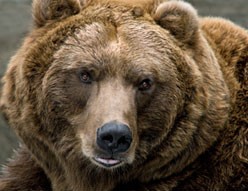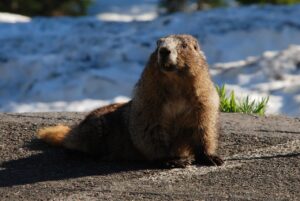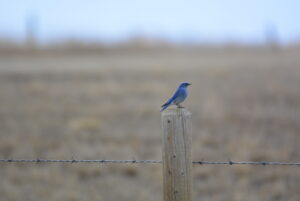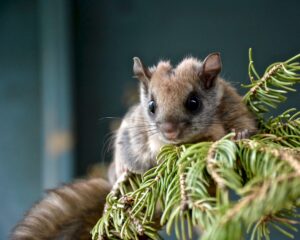Imagine this: you are driving down the road when you see a grizzly bear feeding in the ditch. It would make the perfect photo; there’s no one around, you could easily get closer to the bear and the pine trees make the perfect background. But is taking that photo the right thing to do?
There has been significant coverage over the recent weeks about the growing number of visitors in Alberta parks who put themselves in harms’ way, with the hope of getting that “perfect” wildlife photo. One such recent incident in Banff National Park involved a group of about 20 to 30 people who stopped to take photos of a grizzly bear, when one individual broke away from the group and put themselves within mere metres of the bear, attempting to get the perfect shot (Fletcher, Robson).
Alberta Parks’ Safety Around Wildlife guide recommends that spectators keep a distance of at least three bus lengths, or 30 metres, away from large animals, such as elk and moose, and about three times that distance, or 100 metres away, from bears. While wild animals may look cute, they are, of course, wild creatures and are unpredictable and potentially dangerous, and need to be treated as such. Spectators should always remain in their vehicle.
But there’s more to consider than safety, when deciding whether or not to take that photo. Wild animals that spend too much time in the vicinity of humans can become habituated to humans. An animal who becomes habituated to humans may venture further into more populated areas in search of food, or no longer flee when he/she sees a vehicle or comes into contact with humans, which is dangerous for the animal. When deciding whether or not to take a photo of a wild animal, consider that even though there may not be an immediate threat to you as the photographer, simply being in the vicinity may make the animal feel more comfortable around humans (“Alberta Bear Smart”).
So the next time you stumble across a wild animal, though it may be tempting to get closer to get the perfect photo, consider helping to keep that wild animal wild by moving along.
Are you interested in learning how to support AIWC as they rehabilitate injured and orphaned wildlife? Visit www.aiwc.ca/support-us for more information!
Fletcher, Robson. “’Unbelievable’: Banff visitor walks right up to grizzly in apparent bid for closeup photo.” CBC News Calgary, 26 June 2017. Web. 3 July 2017. <https://www.cbc.ca/news/canada/calgary/banff-bear-grizzly-photo-close-up-danger-1.4178541>.
“Safety Around Wildlife.” Alberta Parks, Web. 03 July 2017. <https://www.albertaparks.ca/albertaparksca/advisories-public-safety/outdoor-safety/safety-around-wildlife/>.
“Alberta Bear Smart.” Alberta Environment and Parks, May 2011. Web. 3 July 2017. <https://aep.alberta.ca/recreation-public-use/alberta-bear-smart/documents/AlbertaBearSmart-ProgramManual-May2011.pdf>.
Photo Credit: Alberta Environment and Parks





2 thoughts on “Respecting Wildlife”
What do I do if I find injured wildlife within a national park? Can I bring them to you? If not, who do I call and what can I expect them to do for the animal?
Hi Michelle,
If you find an injured animal within a national park you can still call your closest wildlife rehabilitation centre. If that happens to be us at AIWC, you can bring the animal to us for care and can call our wildlife hotline first at 403-946-2361 so we can best advise you. Thank you!